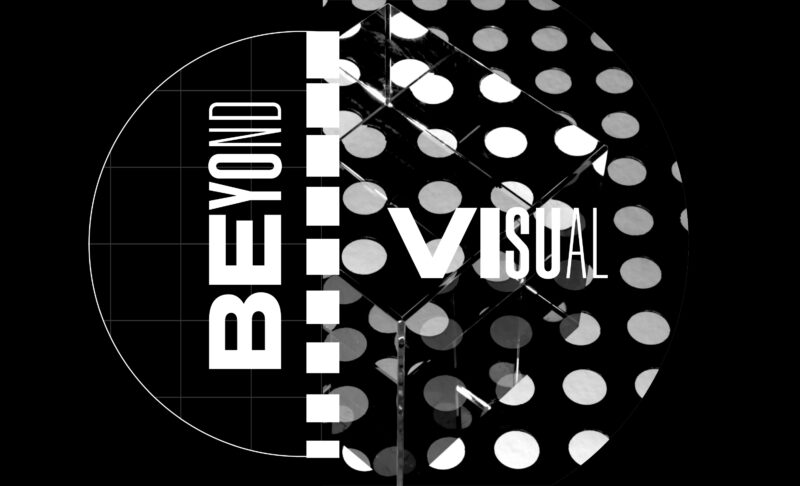Dos And Don’ts Of Client Pitch Presentations
Related Services
Credits

Proposal presentations are an integral part of the business- and constantly trying to pitch new ideas, solutions, products, or services and convincing clients to change the status quo is something that agencies do best.
The tricky part? Figuring out the formula that would help keep your clients interested in what you have to say – from start to finish. There is nothing more frustrating and flat-out discouraging than getting to the very end of a long consultation process, only to notice that, right as you’re giving your presentation of the business solution, your clients are losing interest. Sounds like a nightmare, right?
Many seem to struggle with getting their client pitch presentations right – be it in terms of putting together a professional-looking sales deck, having the right “stage presence,” or simply failing to keep their prospects engaged. But with the dos and don’ts of client pitch presentations outlined here, you may just be able to prepare a winning pitch that gets your clients to say “Yes” to whatever you’re proposing.
Dos & Don’ts Of Business Presentations: 10 Tips For Engaging Your Clients
DO Start Strong By Addressing Problems & Challenges
The first few minutes – some would even argue that we are talking about mere seconds here – of your presentation are crucial. That’s when they either get “hooked,” and you leave them wanting more, or they lose all interest and tune out for the rest of the meeting. First impressions are everything; that’s as true in business as it is in everyday life. That is why it’s paramount that you start off strong, preferably by emphasizing their pain points – and the urgency of the issues they’re facing – and set solid foundations for the rest of your pitch.You want them to, hopefully, go, “That’s interesting. Please, tell me more.” the second you begin your presentation, and keep that sentiment going until the last slide.
DO Believe In Your Solution
You have to believe in the solution you’re pitching to the clients and show that you’re passionate about it. But even more importantly, you have to make that enthusiasm contagious. The spark in your eye, the energy in your voice, your personal drive, and the confidence in what you are proposing are, in most cases, is what actually closes the deal. Here’s one way to sum this up: If you don’t believe in the solutions or products you’re pitching to your clients, why should they?
DO Define The Core Message Of Your Pitch
Your presentation must have a clear and, above all, compelling core message – one you’ll define in advance and stick to throughout the entire presentation. Everything else you’ll cover in your pitch should be structured according to and around that core idea, driving your point home in a clear and concise way. Also, re-emphasize it as often as you’d like throughout the pitch – especially when discussing relevant examples.
You want to provide compelling reasons why the client should consider your proposal and listen to what you have to say. Straying away from that core message would only introduce confusion, making your pitch harder to follow – and harder to say “Yes” to as a result.
DO Use Visuals That Support Your Message
You want to include some relevant metrics and research that support your claims. But what you do NOT want is to bombard your clients with unnecessary amounts of data and information. Visuals are way more effective in driving your points across and strengthening your words – and, ultimately, keeping things easier to understand – than a bunch of words and numbers thrown into each slide. Relevant images and videos, visual representation of data, accompanied by professional design and a fitting color theme, will not only make the presentation more appealing to the eye but keep your audience hooked, too.
DO Make Room For Questions
You will do your best to cover all grounds and leave no room for confusion – but that doesn’t mean that your clients won’t have any lingering questions. So, don’t assume that there won’t be any need for a quick Q&A session after you’re done. Try to anticipate the type of questions they’re most likely to ask and prepare your answers accordingly. Remember:
The way you handle the Q&A bit of the meeting could determine the success of your pitch. On a related note, remember to ask questions yourself, as well. It encourages clients to engage with you and helps you stay in control of the meeting.
DO Make It All About Them
We’ve mentioned the importance of incorporating some visual elements, as opposed to creating a text-heavy presentation, because visuals tend to add emotional value. Here’s where you can take things a step further, though: Customize your pitch – and, essentially, make it all about the client.
You’ve done your research and gathered information; here’s where you put it to use. Remember that clients want to feel understood; that’s a big part of a successful pitch. They want to see that you get their needs and core values – and feel like you know them. And one way to promote that sense of familiarity and understanding is to use their colors, fonts, and logo – maybe even some of the images featured on their website. They’ll instantly recognize themselves in your pitch – which will, in turn, make them feel understood and valued.
DON’T Write It All
You are probably thinking, “Well, that doesn’t seem like such a big deal.” Why would it even be a problem that you have all your info laid out on each slide?
Well, here’s the thing: For one, writing everything you plan on saying makes your slides look cluttered; the basic rule of presentation formatting is three to six bullet points per slide, with one line of text per point. Everything else just seems like too much and begins to distract – or even confuse – your clients. And two, it sets you up for a boring pitch. If your clients happen to read faster than you’re able to speak – and that’s almost always the case – they’ll go over the slide before you do, meaning they have no reason to continue paying attention.
DON’T Read Your Slides
Another thing to avoid when doing a presentation – and this one ties in closely with our previous point – is reading your slides word for word. One, it makes you sound like a robot – and it will turn even the most exciting presentations into a monotonous, boring mess. Two, it forces you to break eye contact with your audience and turn your back on them – which is never a good idea. These slides are your visual guidelines, with key points that you wish to elaborate on further. But you should still be the one telling the story – and not your slides.
DON’T Use Overly Technical, Industry-Specific Jargon
Sure, you want to show off that you know what you’re talking about here – but do remember that most of the people you’re pitching your ideas to here are CEOs and managers. They’re far more interested in the business-related side of your pitch. Of course, you still want to cover certain technicalities in your presentations. But using too many industry buzzwords and technical jargon is a surefire way to confuse your prospects. And a confused mind is more inclined to say “No.”In other words, make sure that you know your audience and speak their language.
DON’T Make It Generic
You’re not the first person trying to pitch a solution or a new product to these people. And you’re definitely not the last one, either. You have to stand out – in terms of the pain points you address, the stories you tell, and the data you present to them. Sell them a vision – and make it compelling. The same thing applies to how you present your ideas. Cliches, lack of personality, unnecessary or irrelevant information, and giving the same, one-size-fits-all pitch to different stakeholders is a definite no-no. The last thing you want is for your client to leave the meeting thinking, “Well, that was a waste of my time.”
DON’T Try To “Wing It”
Don’t assume that you can just get in front of your audience and “wing it.” Practice and prepare for your pitch – if you don’t, your clients will definitely notice. Most people can tell pretty much instantly when someone’s improvising and making things up as they go along, with no clear agenda or storyline. And that’s never a good look. If you show that you didn’t care enough about this presentation to prepare for it, why would they care enough to listen to it?


